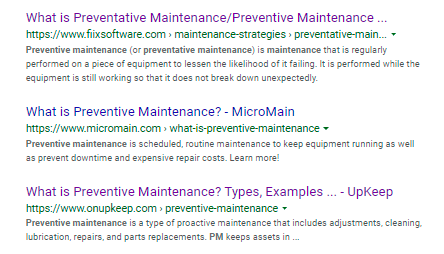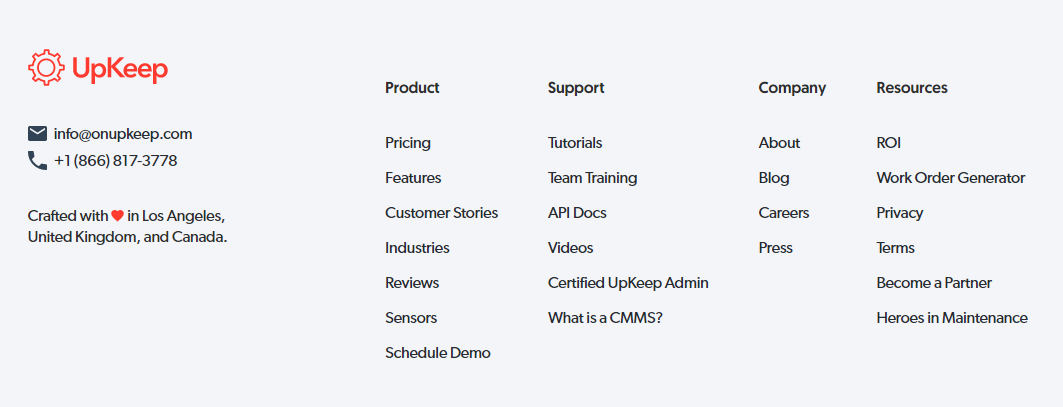Blog content can entice customers to your product; however, due to Google’s focus on search intent, a blog may not be the best form of content marketing or social media marketing. How do you figure out if your blog is enough or if you need to pursue other content marketing strategies? In the following paragraphs, you will learn about search intent, what it is, how to find it, and how to create content to match it.
What is Search Intent
Search intent, also known as keyword intent, is the reason behind the search. There are three main types:
- Informational Intent – When a user is looking to answer how, when, or what.
- Navigational Intent – When a user is looking for a specific URL or brand. As this type of intent is primarily looking for branded queries, we will not focus on this in this article.
- Transactional Intent – When a user is looking to perform an action such as making a purchase, starting a free trial, or downloading an ebook.
How to Find Search Intent
There are a few ways that you can determine the intent of the search for your keywords:
- Check the search engine result pages (SERPs)
- Look for certain phrases
- People Also Asked
Check the SERPs
Searching your keywords in Google and seeing what kind of non-ad results come up is the most reliable way to find the intent behind your keywords. Ideally, you will do this in incognito mode to take away any personalization Google has for you. Look to see what type of content Google is prioritizing, is it mostly what is articles, how-to videos, product landing pages, or feature pages. For example, when you search for “preventive maintenance,” four of the top five search results are articles answering “what is preventive maintenance”. If you see something similar to this, it means Google has placed an informational intent behind your keyword.

Look for Certain Phrases
Certain phrases indicate a particular type of intent.
For informational intent, the key phrases are:
- What is
- How to
- Information
- Define
- Best way to
For transactional intent, the key phrases are:
- Buy
- Review
- Sign up
- Register
- Best
If your keywords contain any of these phrases or words, it can hint at a particular type of intent for your keywords.
People Also Asked
Lastly, another great way to identify the intent behind a search for our keywords is by looking at what people also asked. Look for the key phrases that indicated either a buying or investigational intent.

When A Blog Is Enough
If you find that your keywords in the SERP are a mix of different types of informational intent — what is, how to, when is — and if the keyword isn’t competitive or highly important to your business, then it makes sense to keep it all on your blog. Keeping it together lets you consolidate your backlinks and maintain a logical site architecture.
When You Need More Than a Blog
Here are a few ways when you need more than a blog to help boost its chances of ranking:
- If you see consistency in the type of informational intent for your keywords in the SERP. For example, most of the articles that are showing up are definition based.
- If you see transactional intent behind for your keywords, whether it’s a feature page, review page, or product listing.
- If the keywords you’re targeting are highly important to your business, you can separate it from the blog to prioritize it.
Informational Intent
UpKeep noticed that Google was placing an emphasis on definition based articles for many of their keywords. Rather than stuffing all these definition-based articles into their blog, they created a Learning Center with their keywords. It helped to develop a logical site map that provides users a place to answer all their questions and additionally helped keywords get ranked.
Pendo made a similar choice with their Glossary. It includes brief definitions on one page for great SEO with links to longer articles that can then rank separately for their high-value keywords.
Help Scout went in a different direction due to the highly competitive nature of their keywords and placed their content on the home page. By placing the content on the home page, they were able to rank in first place for the keyword “customer service skills”.

UpKeep also added their highly competitive and important keyword to their homepage. As a result, they were able to increase their rankings for the keyword “CMMS”.

Should you find that your keywords point towards an informational search intent and are unsure of if your content marketing efforts should include more than blog posts, ask yourself:
- Who are my customers?
- Why are they searching for my keywords?
- How many of my keywords are searched this way?
- Would a separate section be best to present this information?
Transactional Intent
If the keyword you’re targeting is highly important to your business and Google is placing a transactional intent behind the keyword, then you will need to create a specific page for it. For UpKeep, the keyword “work order software” is of high importance and has a transactional intent behind it. To increase their rank for that keyword, UpKeep created a features page for the keyword to get people to sign up for a free trial.
To better decide if you need more than blog content to target your keywords with a transactional intent ask yourself:
- Are customers looking to buy my product?
- Is a landing page (or something else) a more natural way to target these customers?
- Do my customers know they need my product already?
Overall, content marketing is more than just blogging. With today’s Google search algorithm, you must understand search intent and create content to match. Not only will you improve your chances of ranking higher, but you’ll enhance your customer’s experience with your brand.

